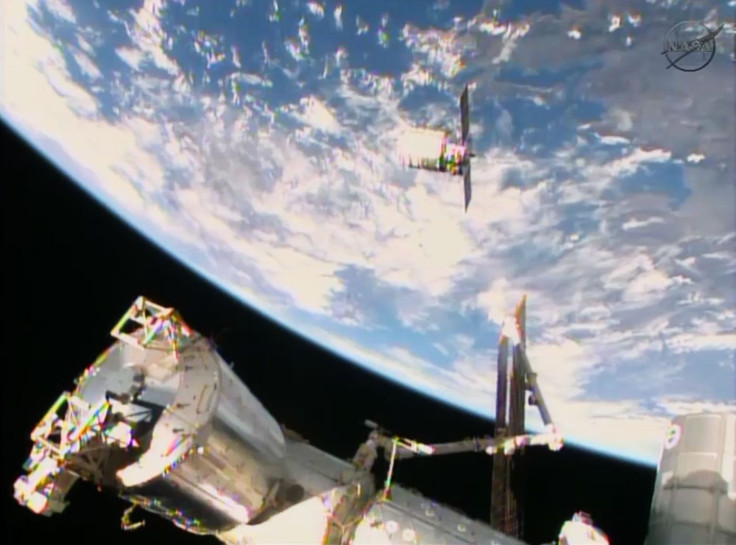Orbital Sciences Cygnus Commercial Resupply Craft Docks With The International Space Station

After two delays due to cold weather and conditions in space, Orbital Sciences’ Cygnus commercial resupply craft reached the International Space Station on Jan. 12. The docking mission was led by NASA astronaut Mike Hopkins and Koichi Wakata, an astronaut from the Japan Aerospace Exploration Agency, or JAXA.
Orbital Sciences’ International Space Station Commercial Resupply Mission, ORB-1, was scheduled to launch on Jan. 7 but was delayed due to extreme cold. ORB-1 was rescheduled for Jan. 8 but was scrapped due to space weather caused by an X-class solar flare, the first of 2014, which led to an increased amount of space radiation. Orbital successfully launched ORB-1 on Jan. 9, at 1:08 p.m. EST from Wallops Island, Virginia.
On Jan. 11, the Cygnus spacecraft began its rendezvous maneuvers, which included thruster bursts to get closer to ISS, an “ADV-4” burn to put Cygnus into a better position to be handled by the space station's robotic arm, and by 5:50 a.m. EST on Jan. 12, it was within 10 meters of the ISS.
According to NASA, Hopkins used the robotic arm to grapple with Cygnus while Wakata attached the spacecraft to the Harmony Node. The docking mission was completed at 8:05 a.m. EST. The Expedition 38 crew will begin the five-week process of unloading Cygnus’ cargo, containing 2,780 pounds of supplies and scientific instruments, on Monday. Cygnus will be detached from the Harmony Node as part of an unberthing mission in February, notes NASA.
ORB-1 was Orbital’s first ISS cargo mission for the company. SpaceX and its Dragon spacecraft are also contracted for resupply missions as part of NASA’s Commercial Orbital Transportation Services, or COTS, project. Orbital Sciences will perform eight resupply missions as part of its Commercial Resupply Services contract.
Cyrgnus’ cargo includes videotapes, crew provisions, hardware, various CubeSats and 23 science experiments developed by students. According to Orbital, the ORB-1 payload includes the NLP Vaccine-21 experiment to test the effectiveness of antibiotics in space and Burning and Suppression of Solids 2, BASS-2, experiment to test how different materials burn in space. One of the scientific payloads is for Story Time from Space, which features ISS crew members reading children’s books and performing simple math and science experiments. Belated Christmas presents, as well as fruit from NASA, were also part of the payload, reports the Associated Press.
Cygnus also brought an ant farm to the ISS. The Commercial Generic Bioprocessing Apparatus Science Insert-06 (CS1-06) is better known as Ants in Space. The experiment involves comparing how ant behavior in normal gravity and microgravity conditions.
The videos of Orbital Sciences' Cygnus spacecraft arriving and docking with the International Space Station are courtesy of NASA, and can be viewed below.
© Copyright IBTimes 2024. All rights reserved.






















